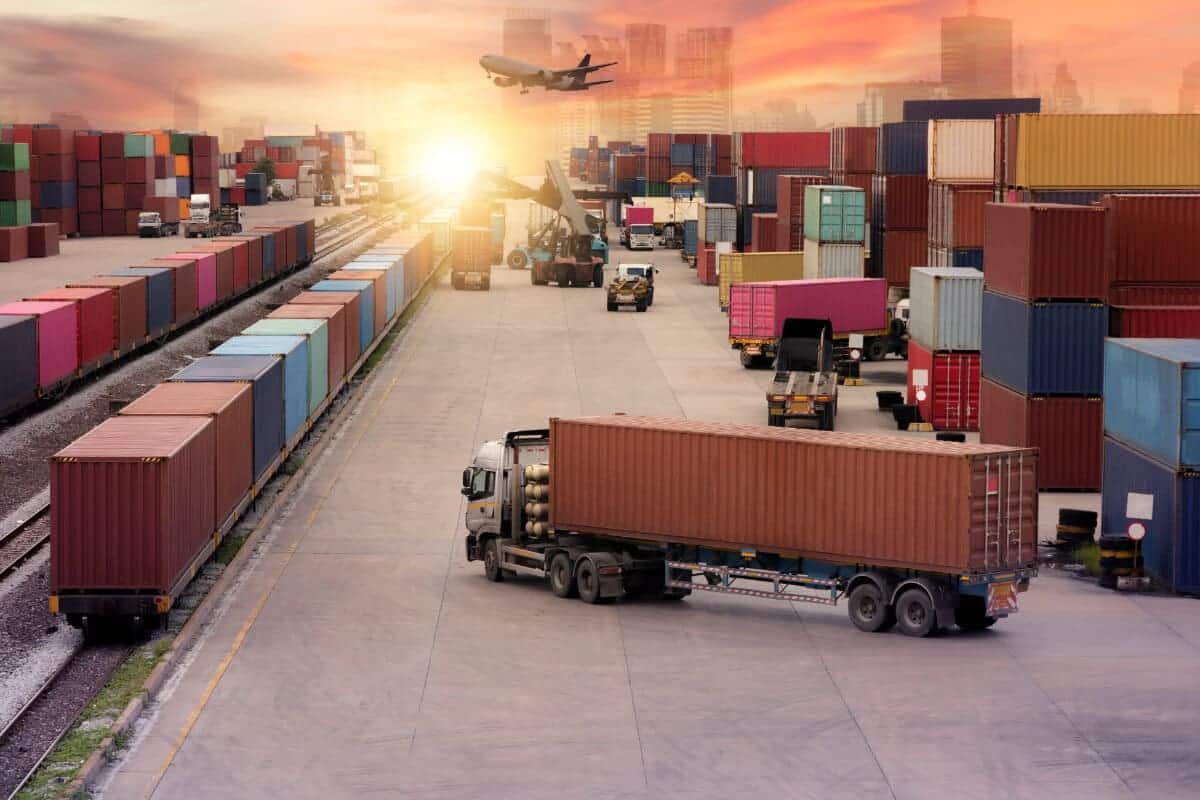Hey there! Ever stop to think about how that new phone got into your hands or how supermarkets are always stocked with bananas from halfway around the world? It’s all thanks to global supply chains, the unsung heroes of our daily lives. Imagine a massive, super-fast relay race where batons are passed from manufacturers to trucks, ships, and stores until they reach us. It’s complex, it’s fascinating, and it’s what makes our world spin.
So buckle up because we’re about to take a whirlwind tour through the ins and outs of global supply chains, and trust me, it’s more exciting than the latest superhero movie!
Table of Contents
- The Fundamentals of Global Supply Chains
- Challenges and Opportunities in Global Supply Chain Management
- Impact of Technology and Innovation on Supply Chains
- The Role of Sustainability in Modern Supply Chains
- The Greening of Global Supply Chains: A Journey into Sustainability
- Sustainability: The New Buzzword in Town
- Recycling and Upcycling – Turning Trash into Treasure
- Eco-friendly Packaging – Not Just a Pretty Box
- Renewable Energy – The Powerhouse of Change
- Lean and Mean – Efficiency is Everything
- Smart Transportation – Rolling on the Green Side
- Greening the Ports – More than Just a Pit Stop
- The Ripple Effect – It’s Contagious!
- Final Take – The Green Future is Now
- The Future of Global Supply Chains Post-Pandemic
- Related Content
The Fundamentals of Global Supply Chains
The Global Supply Chain: A Magical Network Keeping Our World Running Smoothly
Imagine a world where everything you need is at your fingertips. Do you want a fresh apple from New Zealand? No problem. How about a sleek new phone designed in California? Easy. This isn’t just convenience; it’s a kind of modern magic. But who are the magicians behind this act? The global supply chain is a complex network that ensures our lives run without a hitch.
At the heart of it all is the global supply chain, a true marvel. It’s like the world’s biggest backstage crew, working around the clock to ensure the show goes on without a glitch. And what a show it is! The products we love and rely on make a long journey before they reach our hands. They often trot the globe, crossing oceans and continents.
Here’s the skinny: the global supply chain is a sequence of steps that manufactures and moves goods to consumers. It connects farmers, factories, warehouses, and stores before landing in your home. It’s like a relay race where the baton is your favorite pair of sneakers or your morning cup of coffee.
But wait, how exactly does this supply chain work its magic? Let’s break it down.
First, there’s production. Imagine a massive symphony where every instrument plays a part. Raw materials are sourced from different corners of the planet. Cotton might come from India and polyester from China. Combined, they create the fabric for your trendy jacket.
Next up, transportation. This stage is a logistical ballet orchestrated with precision. Your jacket needs to get from the factory to your local store. It might hitch a ride on a cargo ship, get loaded onto a massive freight train, and then hitch a final lift on a truck to make it to your city.
But the supply chain isn’t just about moving products; it’s also about storing them. Warehouses are the unsung heroes here. These aren’t just storage units; they’re high-tech hubs where goods are managed and dispatched. They make sure that when you click “buy”, your jacket isn’t on another continent.
Then there’s the distribution phase. This is where things get personal. Distribution centers are busy, bustling, and brimming with goods like Santa’s workshop. They ensure your jacket gets packed, shipped, and delivered to your doorstep or favorite store.
Finally, we hit the sale moment when products meet customers. It’s showtime! Retail stores and online platforms offer goods in neatly arranged digital or physical shelves for us to browse and buy.
The global supply chain isn’t just about efficiency; it’s bright, too. It uses tech like GPS, RFID tags, and AI to stay on track and adapt to challenges—think weather delays, political upheavals, or global pandemics. The system is always updating and optimizing.
Real talk: the supply chain does more than keep our world running; it’s also an economic powerhouse. Providing jobs and fueling trade is a heavyweight champion in the global economy.
But like any act of magic, the supply chain’s charm comes from not seeing the wires. As customers, we often overlook the complex web that brings a world of goods to our door. Remember the next time you hold a new gadget or wear a new outfit: The global supply chain has performed its enchantment effortlessly and silently, ensuring our lives are the show that never stops.
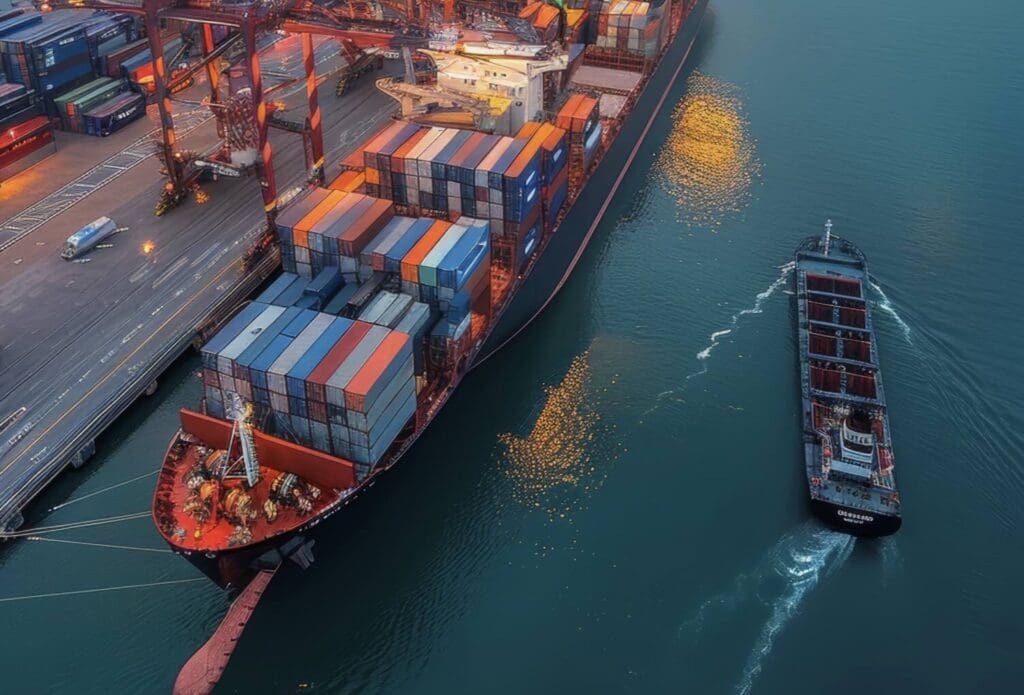
Challenges and Opportunities in Global Supply Chain Management
Mastering the Art of Supply Chain Adaptation
When things go sideways in the supply chain world, the real pros don’t just roll with the punches; they turn those challenges into opportunities for growth and improvement. How, you ask? It’s all about agility, creativity, and a sprinkle of genius in problem-solving.
Take inventory challenges, for example. When shelves look sparse, the real maestros don’t just wring their hands in distress. Nope, they dig into their toolbox of tricks and tweak their inventory management strategies. Some turn to just-in-time inventory methods, keeping only what they need on hand to reduce costs and waste, while others snatch up the chance to diversify their supplier list, ensuring they’ve got a plan B (and C and D) for when supplier A hits a snag.
And let’s chat about the tech-savvy side of things. When problems pop up, the supply chain savvy doesn’t just stick to the same old script. They’re always on the prowl for the latest and greatest in tech to give them the edge. Whether it’s embracing the Internet of Things (IoT) to track goods with pinpoint precision or unleashing the power of big data to forecast demand like a modern-day Nostradamus, these maestros are tech-forward and ready for anything.
Have you ever heard of the butterfly effect? In supply chain lingo, even tiny changes at one end can cause a hurricane of chaos down the line. Have you experienced a delay in getting the raw materials? Without missing a beat, supply chain maestros rejig production schedules, communicate transparently with customers to manage expectations, and maybe even innovate a new product line that doesn’t rely on the delayed stuff.
Customer demands shifting like sands in the desert? No sweat. Our supply chain pros are on the market’s pulse, ready to pivot product designs and adapt marketing strategies. They know that staying in tune with customer needs isn’t just about reacting; it’s about predicting and shaping desire, crafting a supply chain that’s responsive and resilient in the face of change.
When the going gets tough, the tough get collaborating. Supply chain whizzes know they can’t go it alone, so they reach out and build rock-solid relationships. They connect with vendors, customers, and logistics partners to clear up kinks in the supply chain because unity and a shared game plan aren’t just feel-good buzzwords—they’re a lifeline.
Don’t forget risk management—these maestros are tightrope walkers with a safety net. They’re always scouting potential pitfalls and finding clever ways to avoid them or soften the blow. From beefing up cyber security to safeguard precious data to diversifying transport routes to dodge Mother Nature’s curveballs, they prep for the unexpected as a doomsday prepper preps for the apocalypse.
In the high-stakes supply chain world, where obstacles are as common as coffee breaks, the maestros don’t despair. They innovate, collaborate, tech up, and strategize, seeing every challenge as a chance to test their metal and come out stronger. They know every obstacle is an invitation to leap, not a wall to bang their heads against. And trust me, their leaps are the stuff of legend. So, next time your supply chain faces a hiccup, channel your inner maestro and make that hurdle a high jump to victory lane.

Impact of Technology and Innovation on Supply Chains
Game-changing tech innovations are making waves in supply chains, transforming the industry with jaw-dropping advancements that streamline processes and elevate efficiency. These innovations are vital as the driving force behind how products are moved and managed globally. Let’s dive into some of the most revolutionary tech making its mark today.
First, Artificial Intelligence (AI) and Machine Learning (ML) are at the forefront, redefining dynamic and responsive supply chains. AI algorithms pore over vast datasets, offering predictive analytics for better decision-making. You can say goodbye to guesswork regarding inventory levels or customer demand—AI’s got it sorted with spooky accuracy. ML refines these processes over time, constantly improving predictions and operations. Talk about an upgrade!
Then there’s Blockchain technology, which brings trust and transparency to a new level. By creating immutable records of every transaction and movement of goods, blockchain ensures everyone involved, from suppliers to customers, can track a product’s journey. No more squinting at blurry paperwork or second-guessing if an item should be where it claims to be—blockchain lays it all out, clear as day.
Don’t forget the Internet of Things (IoT) is a real game-changer, too. Tiny sensors and smart devices everywhere, from warehouses to shipping containers, are juggling data like pros. This interconnectivity lets companies monitor, in real-time, the condition and location of their goods. Temperature-sensitive items? IoT ensures they stay cool. Lost shipments? They’re more like a thing of the past.
In addition, robots and autonomous vehicles are used in warehouses and distribution centers. These aren’t your run-of-the-mill sci-fi clunkers; we’re talking sleek, efficient machines that pick, pack, and sort without breaking a sweat (because, well, they don’t sweat). Autonomous forklifts and drones also come into play, moving goods faster than you can say “beck and call.”
Last but not least, 3D printing is shaking up manufacturing by enabling local, on-demand production. Imagine trimming down those long supply chains because you can print parts where needed. That’s not just convenient; it’s revolutionary, slashing lead times and upheaving traditional production models.
All these innovations are intertwined, feeding off each other to propel supply chains into the future. Picture this: AI forecasting demand, blockchain tracking, IoT monitors, and robots handling the nitty-gritty—all in seamless harmony. It’s a thrilling time for the industry, with tech moving at warp speed to keep everything running like a well-oiled machine.
Remember, the endgame here is simple: delivering products quicker, cheaper, and smarter. Customers are happy, businesses are thriving, and the supply chain becomes a rockstar, buzzing with productivity. So, let’s keep an eye on these game-changing tech trends—they’re not just revolutionizing supply chains; they’re setting the standard for the future of global trade and commerce.
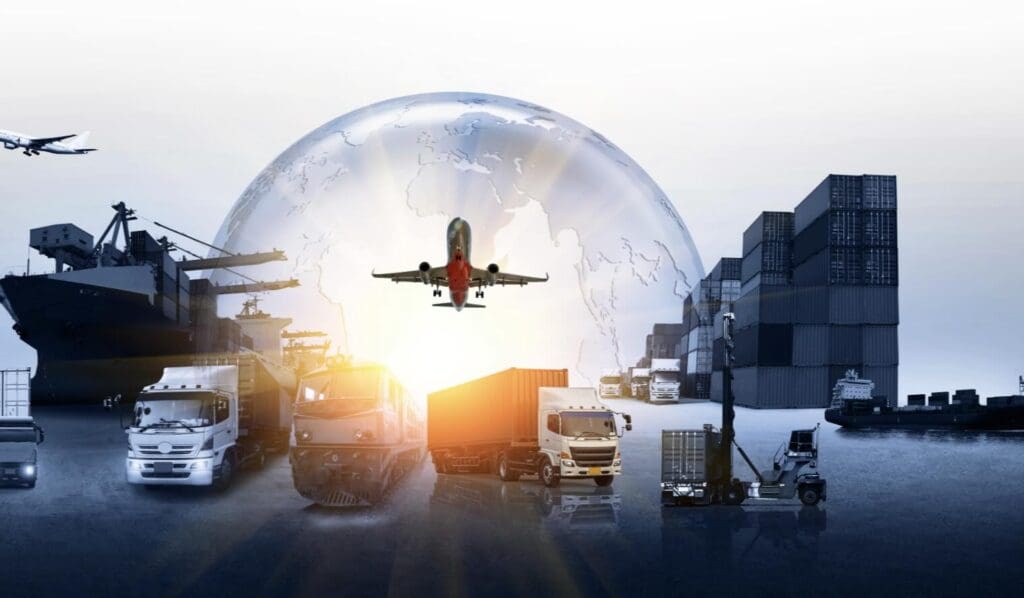
The Role of Sustainability in Modern Supply Chains
The Greening of Global Supply Chains: A Journey into Sustainability
Ever ponder how that sleek smartphone or snazzy pair of sneakers made it into your hands? Look no further than the global supply chain, a complex dance of steps and stages that ingeniously moves products from conception to your doorstep. But here’s the clincher – our planet is throwing us a Sustainability Challenge, and guess what? The global supply chain is stepping up in a big way!
Here’s the lowdown on this green revolution:
Sustainability: The New Buzzword in Town
If you think sustainability is just a fad, think again! Companies worldwide are becoming eco-warriors, all thanks to consumer demand for green products and regulations tighter than a drum. It’s all about reducing carbon footprints, embracing renewable energy, and waving goodbye to waste. And surprise, it’s not just good for Mother Earth – it’s fab for business, too!
Recycling and Upcycling – Turning Trash into Treasure
Remember that soda can you toss? It could be part of your next smartphone. Companies are getting crafty with recycling and upcycling, transforming what was once waste into components of new products. This circular economy keeps resources in play for longer, and that’s a win-win in our book!
Eco-friendly Packaging – Not Just a Pretty Box
Unboxing your goodies is such a thrill. The good news is that companies are swapping out those pesky plastics and choosing biodegradable or recyclable packaging options that keep your products safe and sound. Plus, it’s cutting down on the old carbon emissions and waste – nice!
Renewable Energy – The Powerhouse of Change
Coal and oil are so last century! Solar and wind power are taking center stage, fueling factories and warehouses and slashing those energy bills. Where there’s a roof, there could be solar panels turning sunlight into sweet, sweet energy.
Lean and Mean – Efficiency is Everything
Streamlining processes is the name of the game. It’s all about getting lean to avoid waste and improve efficiency. Sophisticated software programs and nifty devices are helping companies predict demand like a crystal ball so they produce just the right amount – no more, no less.
Smart Transportation – Rolling on the Green Side
It’s not just about the stuff we buy; it’s about how it gets to us. Transportation is cruising down the green highway, switching to electric or hybrid vehicles, and exploring biofuels for a smoother, cleaner ride. Carpooling for cargo, anyone?
Greening the Ports – More than Just a Pit Stop
Ports are no longer just stopovers; they’re going green faster than you can say ‘anchor’s away.’ With shore power stations and cleaner handling equipment, they’re reducing the shipping industry’s environmental splash.
The Ripple Effect – It’s Contagious!
Guess what happens when one company goes green? Everyone else wants in! A ripple effect inspires suppliers, vendors, and customers to join the eco-friendly bandwagon. Call it peer pressure, call it a trend—we call it progress!
Final Take – The Green Future is Now
So there you have it! Global supply chains are not just getting greener but staying sharp and competitive. By cutting costs, winning over eco-conscious customers, and staying ahead of regulations, they’re showing us that green is not just the color of money – it’s the way of the future. Whether it’s cleaner ocean liners or more innovative warehouses, the global supply chain proves that going green without losing its edge isn’t just possible – it’s already happening. Now, that’s something worth unpacking!
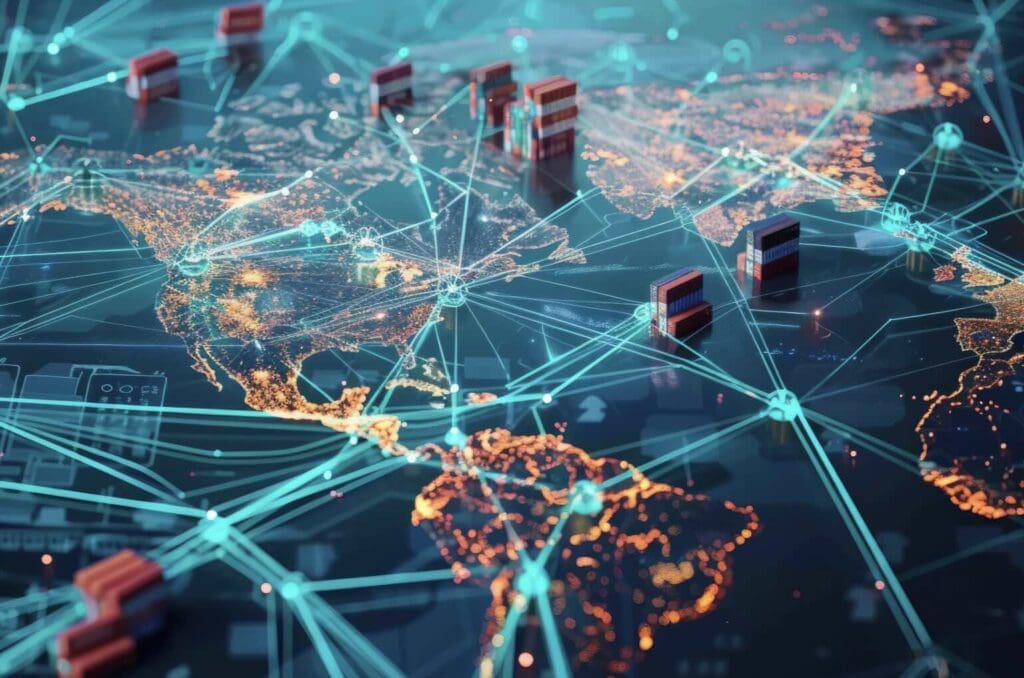
The Future of Global Supply Chains Post-Pandemic
The pandemic cracked open the playbook on supply chain management, showing us the wrinkles and the wrinkles behind the wrinkles! We’ve now got a front-row seat to the real-time revamp of how goods zip around the globe. It’s like peeking behind the curtain and seeing the Wizard of Oz mid-upgrade to his magic act.
Now – onto the juiciest bit: How are supply chains scripting their future post-pandemic playbook?
When countries started closing borders quicker than a startled clam, it was a wake-up call for businesses to look at the map with fresh eyes. Diversifying production and sourcing materials from different regions isn’t just clever; it’s essential. It’s like having a backup dance routine if the star performer sprains an ankle. Companies are learning to tap dance with geopolitical agility to keep the show going.
The spotlight has turned to regionalization. Think global, act local isn’t just for bumper stickers anymore – it’s the new supply chain groove. Businesses are dodging those long, pandemic-style supply disruptions by bringing production closer to home or at least to friendlier neighborhoods. It’s not about ditching the global scene but having a solid local cast that can step up when the global stars can’t make it.
Resilience planning is getting more attention than a high school quarterback during homecoming. It’s about having the strategies to bounce back, like doubling up on those essential widgets or having a ‘just-in-case’ warehouse space. The new black is building supply chains that can take a hit and return for more.
This is next-level tech talk. Imagine creating a virtual copy of your supply chain – your digital twin – to simulate what could happen in the real world. Companies are geeking out on this, first running their supply chains in the virtual world to dodge real-world mishaps. It’s like playing out a video game scenario before strolling into the boss battle.
Let’s not forget the folks on the frontline of the supply chains, steering the ship through the pandemic’s choppy waters. Upskilling employees to handle emerging tech and adapt to new ways of working isn’t just lovely – it’s non-negotiable. It’s about turning everyone into mini innovators who solve problems on the fly. Picture MacGyver, but with logistics.
The end game is still about the people using the stuff flowing through the supply chain. Pumping up the customer experience is critical, like ensuring delivery updates are transparent and real-time. It’s like giving your customers VIP backstage passes—they see it all in action and feel like a part of the process.
With supply chains learning these mega lessons from the pandemic, they’re not just repairing; they’re preparing — for a more robust, innovative way to move the world. It’s not just about bouncing back but springing forward. The future is about supply chains so innovative and agile that they’ll make the pandemic look like a practice round. So, grab some popcorn and watch as the supply chain evolution unfolds – it’s sure to be more riveting than your favorite binge-worthy series.
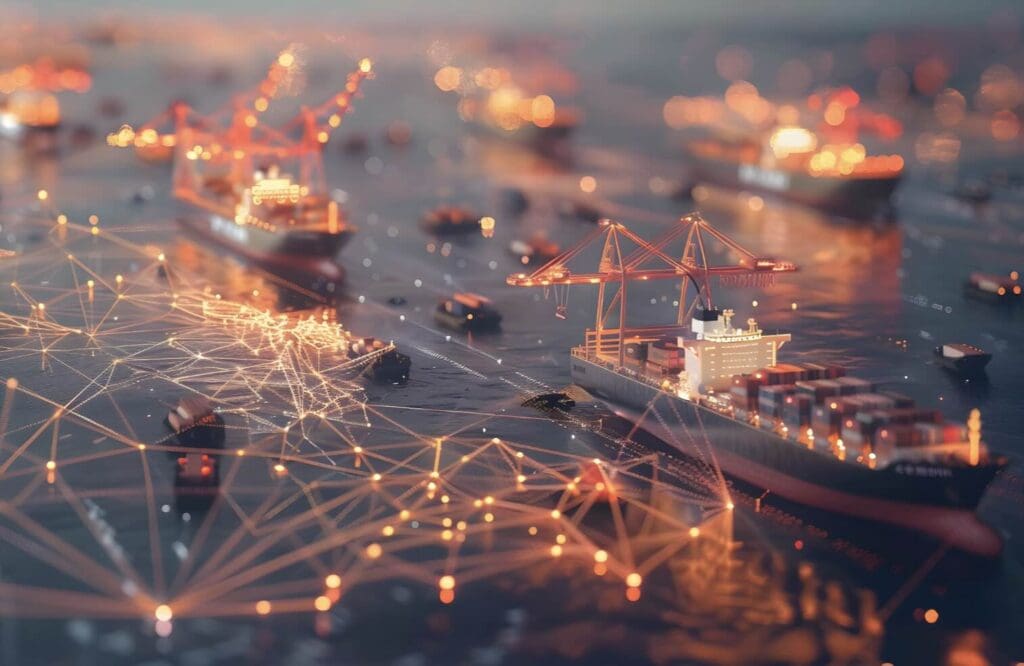
Alright, it’s time to wrap this up! Imagine holding a giant, shiny globe and watching it turn. Every spin is a day’s work and movement in global supply chains. From the techy tools making things run smoother to the green steps keeping our planet happy, global commerce’s gears never stop. Like the most excellent video game level, we’ve leveled up during the pandemic, learning to dodge obstacles and grab power-ups like resilience and digital skills. Keep your eyes on this space because the evolution of supply chains is just gearing up, and the next chapter might just be the most epic yet!
If you are interested in seeing how Mondoro can help you with your supply chain – we would love to talk to you about how we can help you and be part of your global supply chain.
Find out more about how Mondoro can help you create, develop, and manufacture excellent home decor and home furniture products – don’t hesitate to contact me, Anita. Check out my email by clicking here or become a part of our community and join our newsletter by clicking here.
Mondoro gives out a FREE Lookbook to anyone interested. You can receive a copy of our latest Lookbook by clicking here.
Listen to our Podcast called Global Trade Gal. You can find it on all major podcast platforms. Try out to listen to one of our podcasts by clicking here.
Subscribe to our Mondoro Company Limited YouTube Channel with great videos and information by clicking here.
Related Content
What Are The Major Benefits Of Strategic Sourcing?
Never underestimate the proper use of the strategic sourcing process in your supply chain. Strategic sourcing is a significant benefit to all stakeholders within the supply chain. Strategic sourcing forces all stakeholders to look at the supply chain strategy in detail. Strategic sourcing helps to eliminate any potential risks or problems.
You can discover more by reading What Are The Major Benefits Of Strategic Sourcing? by clicking here.
Seven-Step Strategic Sourcing Process Explained
A seven-step strategic sourcing strategy will help companies succeed when procuring a product or a commodity. If companies take the time to go through each of the seven steps, this will help them to ensure they are successful with their sourcing needs.
You can find out more by reading our blog, Seven-Step Strategic Sourcing Process Explained, by clicking here.
Product Sourcing and Strategic Sourcing Explained
Product sourcing is when you source or look to find a supplier for a product you need. Strategic sourcing is strategically sourcing products. Strategic sourcing is not the lowest purchase price but the lowest overall cost. Product and strategic sourcing are very similar, but strategic sourcing is sourcing with a plan.
You can learn more by reading Product Sourcing and Strategic Sourcing Explained by clicking here.

